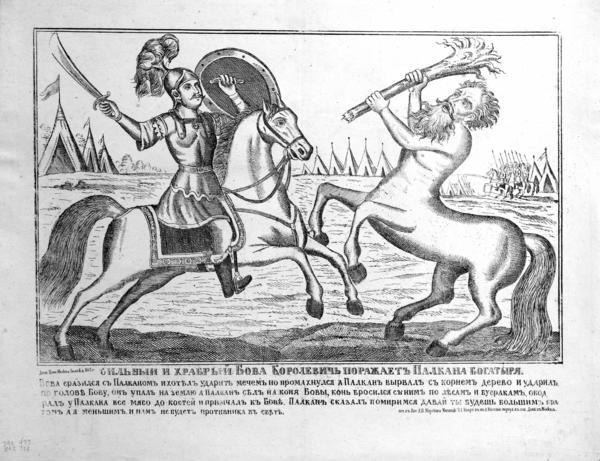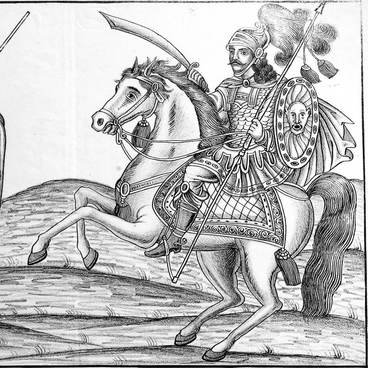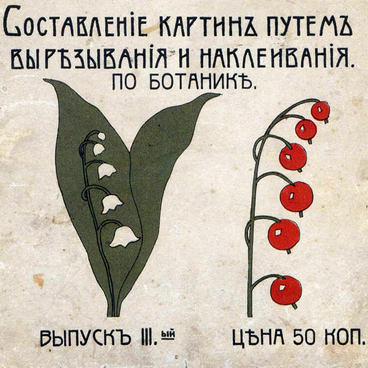Many subjects of popular prints / coloured woodcuts were of foreign origin, but they got ingrained in Russian folklore, appearing in folk poems or fairy tales, or even turning into well-established allegorical expressions. Bova Korolevich was one of those heroes.
Bova Korolevich beating Polkan is a frequent subject of folk prints. ‘The Strong and Brave Bova Korolevich Kills Polkan the Bogatyr’ is a lithographically printed coloured woodcut.
Heroic tales about the exploits of Bova Korolevich are likely to have come from Italy. The plot of the tale is very complex; it has a lot of intrigue, enmity, and feats. Bogatyr Bova managed to defeat all the armies sent after him.
There are military tents in the background of the picture. Polkan went up against Bova, ripping an oak from the ground, like a real Russian bogatyr. But he was half-man and half-horse. And Bova defeated him. But Polkan offered friendship, alliance, and his help, and Bova agreed. Together they defeated many enemies. Polkan saved Bova’s wife and children from death, but died from the claws of a lion who attacked them.
A. Pushkin knew this tale very well and used some names (Dodon) and plot lines in his tales (“The Tale of Tsar Saltan”).
Bova Korolevich beating Polkan is a frequent subject of folk prints. ‘The Strong and Brave Bova Korolevich Kills Polkan the Bogatyr’ is a lithographically printed coloured woodcut.
Heroic tales about the exploits of Bova Korolevich are likely to have come from Italy. The plot of the tale is very complex; it has a lot of intrigue, enmity, and feats. Bogatyr Bova managed to defeat all the armies sent after him.
There are military tents in the background of the picture. Polkan went up against Bova, ripping an oak from the ground, like a real Russian bogatyr. But he was half-man and half-horse. And Bova defeated him. But Polkan offered friendship, alliance, and his help, and Bova agreed. Together they defeated many enemies. Polkan saved Bova’s wife and children from death, but died from the claws of a lion who attacked them.
A. Pushkin knew this tale very well and used some names (Dodon) and plot lines in his tales (“The Tale of Tsar Saltan”).






